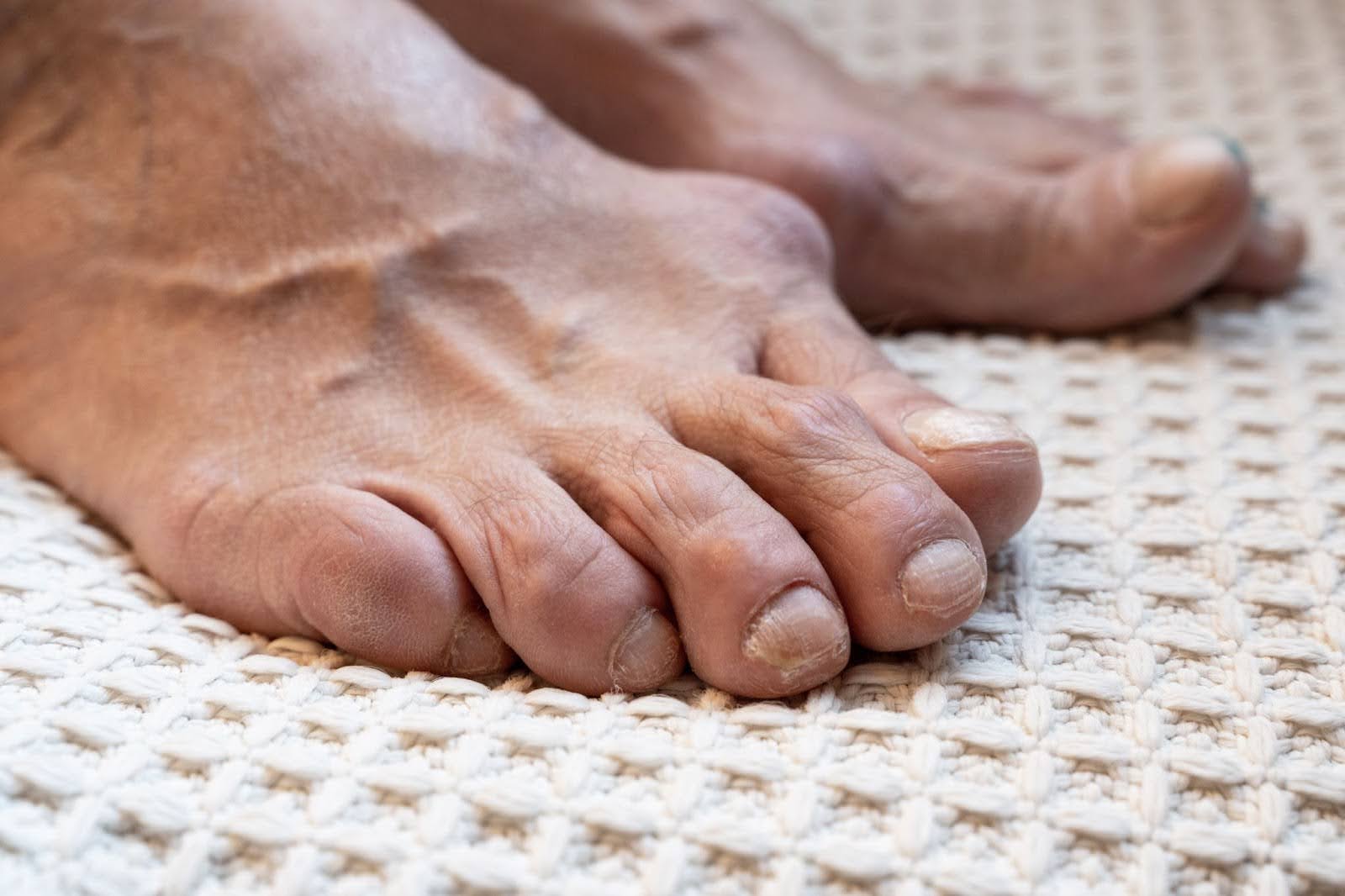Sudden and severe pain in the joints can rob you of mobility, making life harder to enjoy. When gout (a form of inflammatory arthritis) is the cause of this discomfort, it may come with visible swelling and redness—but is gout always visible? The reality is that gout doesn’t always come with obvious visual signs, especially in its early stages. We will help clarify the signs and symptoms of gout and teach you how to manage it effectively, so you can get back to doing the things you enjoy.
What Exactly Is Gout?
Gout is caused by a buildup of uric acid in the bloodstream. Uric acid is the result of the body breaking down purines found in certain foods. When uric acid levels get too high, sharp, needle-like crystals can form in the joints, leading to inflammation, pain, and sometimes visible swelling. It most commonly affects the big toe but can also appear in the ankles, knees, fingers, elbows, and wrists. Gout typically occurs in flares, which are sudden attacks of pain that may last for days or even weeks, followed by periods of few or no symptoms.
Are There Visible Signs of Gout?
Often, gout is accompanied by visible changes, but not always. Gout can sometimes mimic other joint conditions, so recognizing the pattern of symptoms is key. For some, pain may be the only sign. The most common signs of gout include:
- Redness around the affected joint
- Swelling or puffiness, particularly in the big toe or ankle
- Shiny or tight skin over the joint
- Tenderness to the touch
- Warmth in the area due to inflammation
- Tophi, which are lumps under the skin at the joints from a buildup of crystals
- Sudden, intense pain, often at night or upon waking
- Limited range of motion in the affected joint
What Are the Signs of Gout That Can’t Be Seen?
You may experience joint pain without obvious external symptoms, especially in the early stages of gout. Pain may begin in the big toe, though other joints can be affected. That's why it’s important not to ignore joint discomfort, even if the area looks normal. If you experience these symptoms, it’s important to see a healthcare provider for proper evaluation and diagnosis.
Is Gout Always Visible?
No. Gout is not always visible to the eye. Some people experience deep joint pain without any obvious external changes. This is especially true between flare-ups or in the early stages of uric acid buildup. As a result, a lack of redness or swelling doesn’t rule out the presence of gout. In fact, some individuals may not be diagnosed until they’ve had multiple flares or developed tophi, which are visible but usually indicate long-term, unmanaged gout.
What Can Be Done About Gout?
The good news is that gout is highly manageable with the right treatment and lifestyle changes. When you experience signs of gout, work with your healthcare provider to determine a treatment strategy that may include:
- Medication: Prescription medications can help lower uric acid levels or reduce inflammation during an acute flare.
- Dietary Changes: Avoid or reduce foods high in purines, such as red meat, shellfish, and alcohol. Drink plenty of water to help flush out uric acid.
- Regular Physical Activity: Gentle, low-impact movement can help improve circulation and reduce joint stiffness. The Juvent Micro-Impact Platform® is an excellent option for those with joint sensitivity. It delivers safe, subtle micro-impacts through a standing platform to promote blood flow and comfort without adding stress to the joints. The platform’s benefits extend to several areas of your body, making it a valuable addition to your wellness routine.
- Maintaining a Healthy Weight: Carrying excess weight can increase the risk of gout and worsen symptoms. Healthy lifestyle habits go a long way in reducing flare-ups.
Don’t Give in to Gout
While swelling, redness, and tenderness are common indicators of gout, the absence of visible symptoms doesn't mean you’re in the clear. If you’re experiencing unexplained joint pain, especially in the big toe or lower limbs, it’s worth discussing your symptoms with a healthcare provider. Early intervention and the right technology, like the Juvent Micro-Impact Platform, will help you stay mobile and proactive against discomfort so you can focus on the important things in life.
FDA Disclosure
In the US, the Juvent device is considered investigational for the treatment of osteoporosis or improvement/maintenance of bone mineral density and our claims have not been reviewed or cleared by the FDA to treat any disease or condition. (2) Calculated over the 20+ year expected life of a Juvent. The JUVENT® Micro-Impact Platform® is Registered as a Class I medical device for exercise and rehabilitation. JUVENT products are covered by the following issued patents, pending patents and their foreign equivalents: 6,843,776 6,884,2277,094211 7,207,954 7,207,955 7,985,191 8,114,036 11/369,611 11/486,538. Juvent, Dynamic Motion Therapy, Micro-Impact Platform, and the symbol are Registered trademarks of Regenerative Technologies Corporation.


Share:
How Much Rest Time Should You Take Between Workouts?
Preparing for Post-Menopause Both Mentally and Physically